Source :thanhniennews
Recommendations:
Travel tips and guide, travel news, information in Vietnam, Laos, Cambodia and other parts in Asia
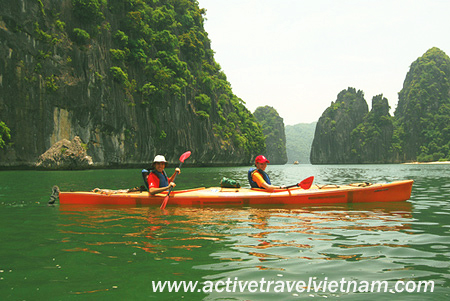 Kayaking tour in Halong Bay, Vietnam
Kayaking tour in Halong Bay, Vietnam
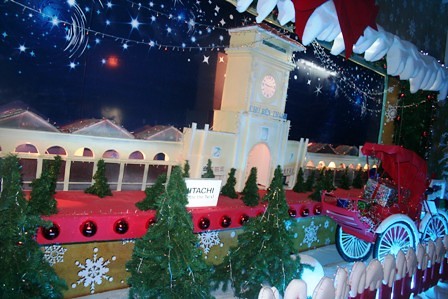 Ben Thanh Market, Ho Chi Minh city, Vietnam
Ben Thanh Market, Ho Chi Minh city, Vietnam

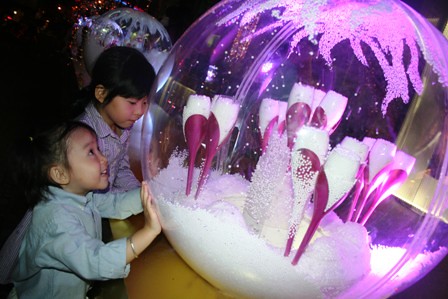

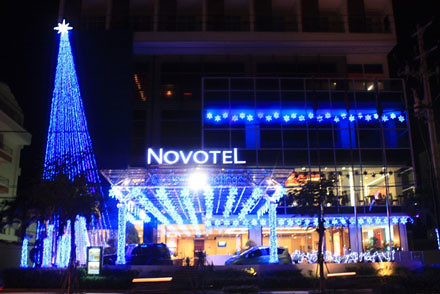
 Hue city:
Hue city: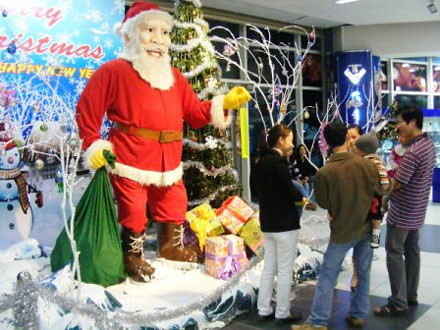


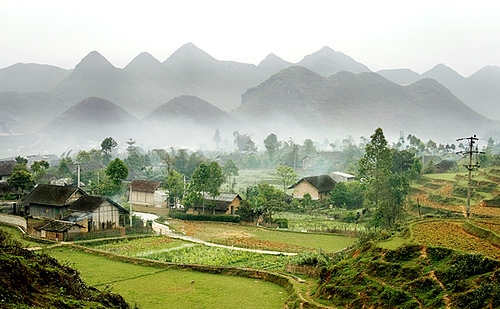 Ha Giang, Vietnam
Ha Giang, Vietnam Quan Ba, Ha Giang
Quan Ba, Ha Giang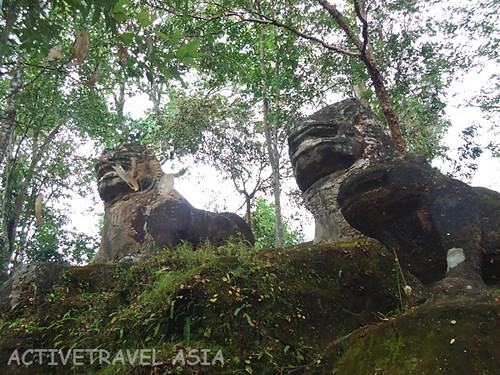 The ruin in the deep jungle, Cambodia
The ruin in the deep jungle, Cambodia
In the ruin of a 1000-year old temple hidden in deep jungle of Phnom Kuleane Mountain, 70 km from Siem Reap, Cambodia, a British journalist is captured and tortured badly by some Khmer rouge soldiers. The journalist has a mission of searching for a treasure that is believed to keep a great power which can open the door to future and could change the future of the world. The journalist has the coordinates where the treasure is hidden and he was kidnapped when he arrived in Siem Reap. The Khmer rouge soldiers base in the jungle of Phnom Kuleane and is also looking for the treasure in order to get back their power. They are informed about the journalist’s journey by their secret agent. And that happen… a team of commandos is sent to the Phnom Kuleane to free the journalist and help him to complete his mission. The commandos fly in on helicopter and land 9 km from the ruin, they walk through jungle, crossing stream, abseiling big rock to reach the ruin. They camp 1 km near the ruin under a big tree and sleep in hammocks. After settling and eating the commandos quietly approach the ruin, they used night vision to locate all the positions and plan for the attack the next day.
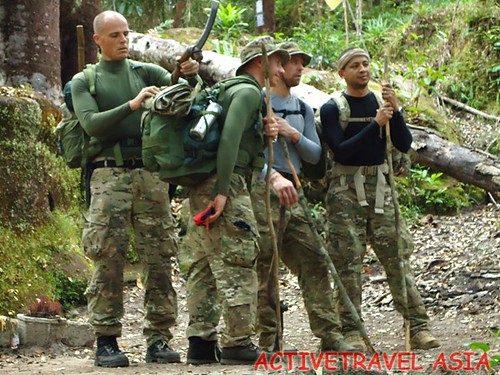 The commandos are ready for the rescue
The commandos are ready for the rescue
 Central Post Office, Ho Chi Minh
Central Post Office, Ho Chi Minh
Hanoi December 13 - December 24, 2010
Volunteer project: International and local volunteers will organize Christmas and New Year festival for extremely poor children living in the Fisher village at the Red River and for the patients of the National Pediatric Hospital in Hanoi. The volunteers will make nice gifts for the children such as light stars.
In the fisher village, in collaboration with the local volunteers and the children, the international participants will organize a big party on the bank of the Red River (theatre, dance, BBQ, etc.). In the Hospital, the volunteers will visit the children in their rooms, dressed as Santa Claus, and will hand out candies and small gifts.

Vietnam is an astonishing amalgamation of diverse culture, natural beauty and captivating historical events. All these combined together makes Vietnam a perfect tourist destination.
Vietnam … intriguing history and mesmerizing culture!!!
Vietnam is an astonishing amalgamation of diverse culture, natural beauty and captivating historical events. All these combined together makes Vietnam a perfect tourist destination. A tour to Vietnam is desirable by all age group with varying interests and liking. Bestowed with a never ending coastline of 3200kms, Vietnam is full of scenic beauty and cultural feasts.
You have an extensive option of booking a tour to Vietnam through various tour operators. If you are an adventurous person then an adventure tour to Vietnam can certainly be quite fulfilling experience. On the other hand a beach vacation in Vietnam can be other most appealing option for tourists who love water and exploring beaches.
In the south of Vietnam is Ho Chi Minh City which was formerly known as Saigon. It plays a huge role in captivating your imagination as a city of historical value and traditions. While exploring south of Vietnam the Cu Chi tunnel is must visit.

October 31, 2010
By Judy McEuen
Travel Writer - Troy Media
It is easy to feel overwhelmed and lost amidst the Hanoi’s bustling streets and the countless mopeds and bicycles moving around.
But don’t get discouraged, even if you want to immediately hop on the nearest van and set off to the more tranquil and eerily beautiful Halong Bay. While not at first glance obvious, Hanoi has several attractions that are worth seeing and its charm will grow on you if you give it a chance. So, rather than escape the hubbub straight away, don’t be afraid to get lost in the city for a while: I guarantee you will enjoy what it has to offer.
Rich cultural heritage
Its modern developments may be completely devoid of beauty and allure but the charm of Hanoi’s rich cultural and historical heritage more than make up for it.
Check out the city’s Old Quarter and experience what it was like to live in the 13th century in this part of the world. Its narrow and winding roads were not simply ordinary thoroughfares; they are also representative of the social status of its residents. Merchants were grouped with merchants, carpenters with their fellow carpenters and sculptors with the other sculptors. Check out the street names and you will have a pretty good idea of the guild it was specially designated for.
Walk around the compact area and you will discover wonderful enclosed markets and ancient structures which now house charming cafes, boutiques and shops. Take a moment to notice how the shops are very narrow at the entrance but seem to go on and on in length. That is how merchants tried to escape taxes. But these shops are not just for show now: there is actually plenty of interesting and lovely merchandise for sale, from intricately designed jewellery to exquisite silk textiles to superb handicrafts among others.
Visit Ho Chi Minh
Walking south from the Old Quarter you will soon discover the laid-back calm of Hoan Kiem Lake which is right at the nucleus of the city centre. This is a perfect place to get your bearing while you enjoy the picturesque view of the placid waters and lakeside atmosphere.
For a bit of history, visit the Ho Chi Minh Mausoleum. His remains are encased in glass and are open to the public. Note that he is an esteemed and beloved hero so expect rigid security measures and a non-negotiable dress code. If you don’t care for mausoleums, you can just visit the nearby Ho Chi Min Museum.
Another popular attraction in Hanoi is the One Pillar Pagoda in the Ba Dinh District. It was built in honour of Emperor Ly Thai Tong. The pagoda is artistically built to resemble the shape of a lotus flower. Also a major historical and religious landmark in the city is the Temple of Literature. It has served disciples of Confucius for centuries and still continues to be a major pilgrimage site for believers. It dates back to the 11th century but it has retained its grandeur and splendour to this day.
The major attractions of Halong Bay, Sa Pa and Bac Ha are just hours away from Hanoi. So, you can easily be on your way after your short tour of the cityThe destination is a path, 40 kilometers long, that winds its way through a dense bamboo grove in Thanh Hoa Province. In order to reach the Suoi Muong bamboo path, there’s a long way to go, past high mountains and deep valleys. A motorbike is an indispensable accessory.
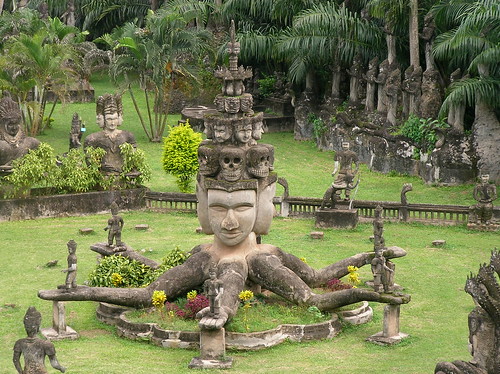 Vientiane, Laos
Vientiane, LaosRefer to Telegraph, travelers wanting to head to this part of the world should not be deterred: the region’s newer, less well explored destinations – Vietnam, Cambodia and Laos – have an immense amount to offer – including breathtaking landscapes, timeless rivers (not least the Mekong), world-class ruins – and diverse minority tribes.
Why go Cambodia
This is a country proud of its ancient beginnings but recovering from a dark, more recent past.
Around two million people a year come to visit the great Khmer temple complex at Angkor and the tourism industry has mushroomed to accommodate them. Hidden in the jungle are the majestic corncob towers and lily-pond moat of Angkor Wat, hundreds of smiling stone faces at Bayon, and romantic Ta Prohm, left as it was discovered, with moss-covered reliefs buckling under the stranglehold of overgrown trees.
Phnom Penh is a city that is fast rejuvenating, with boutique shops and new bars springing up along the riverside. Sights include the Royal Palace, whose gilded pagodas are similar to those in Bangkok. For those wanting to understand the horrors endured under Pol Pot’s regime, the Tuol Sleng Museum and collection of bones at the Killing Fields offer a sobering lesson.
The Cambodian coastline hugs the wild Cardamom Mountains in the west and curls past down-at-heel Sihanoukville to the more appealing resort of Kep, close to the Vietnamese border. Both are jumping-off points for trips to unspoilt islands ringed with golden sand. Kep was once a wealthy retreat, and some of its villas have reopened as chic hotels. Foodies should try local seafood and Kampot pepper crab at the crab market – a row of shacks on the water’s edge.
Tip: Experience rural life on a slow boat across the Tonle Sap, the largest freshwater lake in south-east Asia, passing bird-filled wetlands, rickety fishing boats and villagers waving excitedly from the shore.
Active Travel Cambodia (see above) offers a “Cambodia highlight” tour flying into Siem Reap from Singapore or Vietnam, taking in Angkor, Phnom Penh and Kep. 6 days from £515, depending on hotels, not including international flights.
For further information contact the Cambodia’s Ministry of Tourism (www.mot.gov.kh).
Refer to Telegraph, if travelers wanting to head to peaceful,nice beaches, the region’s newer, less well explored destinations – travelers can find these in Vietnam, Cambodia and Laos – have an immense amount to offer – including breathtaking landscapes, timeless rivers (not least the Mekong), world-class ruins – and diverse minority tribes.
Why go VietnamVietnam stretches between the chaotic but engaging cities of Ho Chi Minh City, formerly Saigon, and Hanoi. The streets are a noisy public stage set for various acts of family life, played out against roaring motorcycle traffic and the persistent patter of street merchants.
Ho Chi Minh City is a buzzing sprawl, home to the moving War Remnants Museum. Hanoi’s old quarter is more manageable. Here you can pay your respects (no talking or shorts) to embalmed leader Ho Chi Minh.Sailing trips around the soaring limestone peaks of Halong Bay are another northern highlight. Created, legend has it, from the spikes of a falling dragon’s tail, they are a humbling sight come rain or shine.
In the misty hills of Sapa, near the Chinese border, hikes through minority-tribe territory can offer better settings and authenticity than those in northern Thailand. Walkers pass through valleys of bamboo forest and rice paddies to meet Hmong and Dao villagers clothed in traditional dress. Bac Ha market is the best place to see Flower Hmong people in their exuberant, fluorescent threads.
With its remnants of French-colonial architecture, lively ‘Old Quarter’ alleyways and streetside culinary culture Hanoi might just be Southeast Asia’s most charming capital city. It may be the oldest, too.
In October, the city entered party mode to mark the 1000th anniversary of the founding of Thang Long, the settlement established by King Ly Thai To on the Red River in the year 1010 that has grown into a metropolis of 6 million inhabitants.

Here are some suggestions from Reuters correspondents with local knowledge to help you make the most of a 48-hour visit:
FRIDAY
6pm: Before diving into Hanoi’s bustle head first, you’ve got to get above the din to see what you’re getting yourself into. Head for the northwest end of Hoan Kiem lake and have a cold one at Legends Beer on the second floor balcony of the “Ham Ca Map” building at No.1 Dinh Tien Hoang street. Or have an espresso (or cocktail) at Illy Cafe on the top floor of the opposite building, the one with the KFC on the ground floor. Take in the sights and sounds of a city at the crossroads of communism and capitalism, quaintness and anarchy.
7.30pm: Grab a taxi and head south to Ngo Hue, a quiet alley between Pho Hue and Ngo Thi Nham street. At No 65 is the mellow but hip Chim Sao where a youthful clientelle sit on the floor around low tables enjoying delicacies like lotus root salad and clay pot fish.
9pm: Stroll over to Trieu Viet Vuong, a street that has built a name for itself as cafe central. Stop for a tropical fruit smoothie or iced coffee. Or, if you prefer, have a nightcap or three at one of Hanoi’s coolest and coziest bars, Tadioto, at No 113. Run by Vietnamese-American journalist and author Nguyen Qui Duc, Tadioto periodically has live music and literary events.
SATURDAY
6am: If you’re up, grab your camera and head down to Hoan Kiem lake or over to Reunification Park, widely referred to as Lenin Park, to watch locals doing taichi and various other morning exercise routines. Enjoy the cool before the day’s heat.
7.30am: ‘Pho’ is the de facto national dish of Vietnam and everyone seems to have their favourite place to eat this noodle soup for breakfast. For clean, classic Hanoi-style, try the relatively upmarket Pho Vuong on Ngo Thi Nham street. Not far away, at No 13 Lo Duc, is one of the city’s best known shops, Pho Thin, where gargantuan broth cauldrons sit on a grimy, medieval-looking stove in the front window.
8.30am: There must be a zillion cafes in Hanoi but Cafe Mai at No 79 Le Van Huu is a no-frills Hanoi institution known for its sublime joe. Across the street there is a Cafe Mai shop where you can buy Vietnamese-grown and roasted beans for home.
9.30am: Head to Cho Hom to check out a giant indoor market that specialises in cloth or go north where, about a half a mile (0.8km) away, is Hoan Kiem lake. To the north side of the lake is the teeming Old Quarter where the 36 streets are named after the goods and services that used to be sold along them.
Alternatively, angle west of the lake to Nha Tho street, the site of the 124-year-old St. Joseph’s Cathedral. Nha Tho street, and the perpendicular Ly Quoc Su, offer boutique shopping.
12pm: A solid lunch option is Madame Hien, at No 15 Chan Cam street. This restaurant in a beautifully restored French villa is chef Didier Corlou’s tribute to his grandmother-in-law, serving up tasty renditions Vietnamese home cooking.
2pm: Take in some of Vietnam’s lively contemporary art scene. Art Vietnam features paintings, sculptures, photos and prints from some top artists. The Bui Gallery bills itself as one of the leading contemporary art galleries in Southeast Asia.
4pm: It’s time for a drink. For a coffee or cocktail in a manicured garden dotted with vintage Vespas, take a taxi to Soft Water on the bank of the Red River.
7pm: If you ate bun cha for lunch, consider Madame Hien for dinner. Otherwise, for a “traditional and experimental” approach to fusing Vietnamese and French flavours, Green Tangerine wins big plaudits.
9pm: For after dinner carousing, try Mao’s Red Lounge or Funky Buddah on Ta Hien street in the Old Quarter. Around the corner, on Hang Buom street, is Dragonfly. If you want to get your late night on, grab a cab to the Red River and Solace, a boat turned into a rather grimy bar. A bit south is another colourful late night spot called the Lighthouse, aka Phuc Tan. Watch your wallet and mobile phone.
SUNDAY
10am: If you want to pamper yourself, the Sunday brunch at the Sofitel Metropole is hard to beat. A more casual breakfast choice would be Joma Bakery Cafe on Dien Bien Phu street, which serves quality Western cafe fare.
2pm: The Vietnam Museum of Ethnology is one of Hanoi’s best, featuring detailed displays of the cultures and traditions of the country’s 54 ethnic groups and life-size replicas of some dwellings. Kids love this museum, especially the water puppet shows put on regularly in the garden.
For war buffs, the Army Museum has room after room of photos and exhibits depicting how the Communist forces vanquished the French colonialists and then the American imperialists. There are several vehicles and planes outside, plus a giant sculpture made from pieces of shot down warplanes.
5pm: The Intercontinental Hotel’s Sunset Bar on West Lake offers a comfortable westward-facing spot to sip a tropical cocktail and watching the sun set. The cheaper way to watch dusk over the lake is to pick from any number of cafes on the banks of West Lake or Truc Bach where you’ll sit on low stools or perhaps, if you’re lucky and they’re not all taken, a lawn chair.
Source: stuff.co.nz
Home | Vietnam adventure tours | Vietnam trekking tours | Vietnam motorcycling tours | Vietnam family tours | Vietnam biking tours | Vietnam kayaking tours | Vietnam Adventure Travel | Halong Bay kayaking tours | Cat Ba kayaking tours | Sapa trekking tours | Mai Chau tours | Vietnam tours | Vietnam motorcycle tours | Cambodia adventure travel | Laos adventure travel | Myanmar adventure travel| viaje a birmania| ví da nam| công chứng thanh xuân